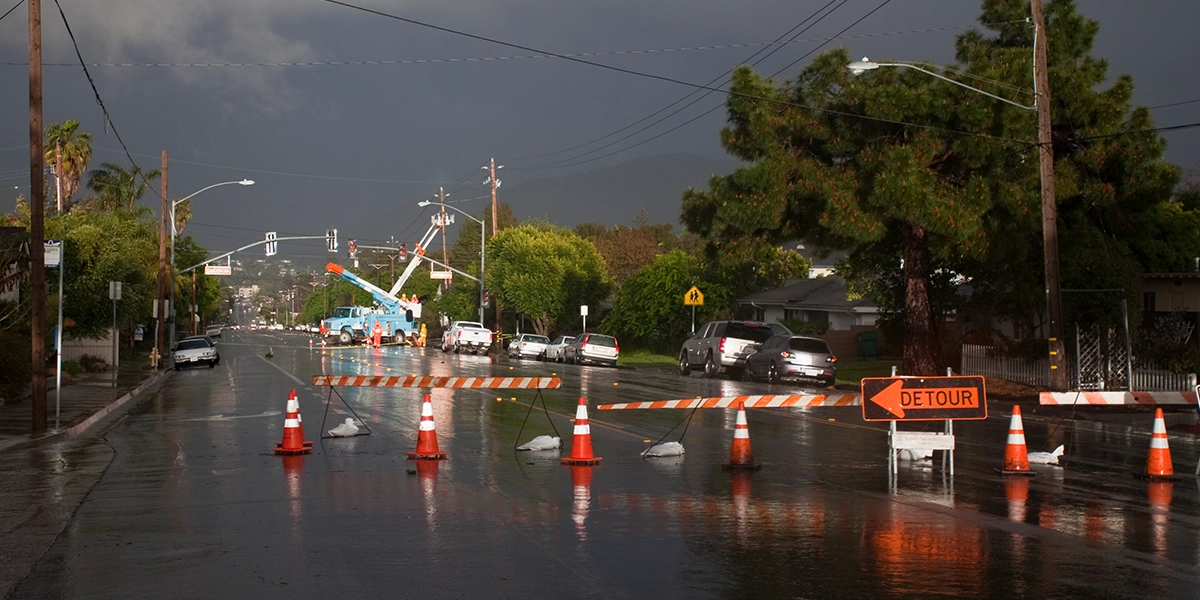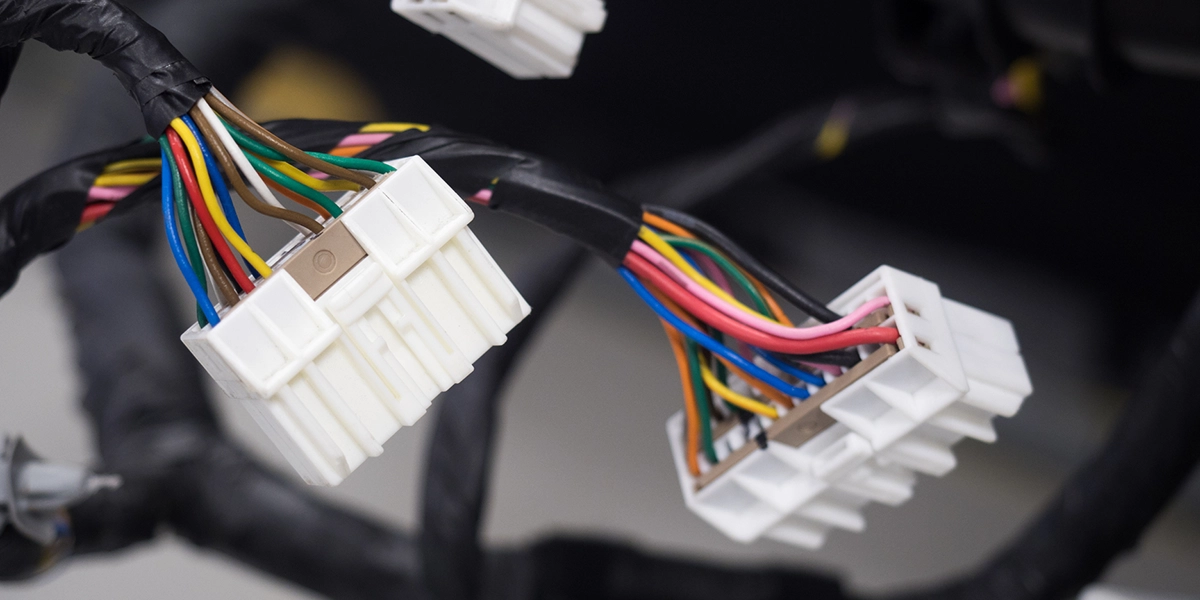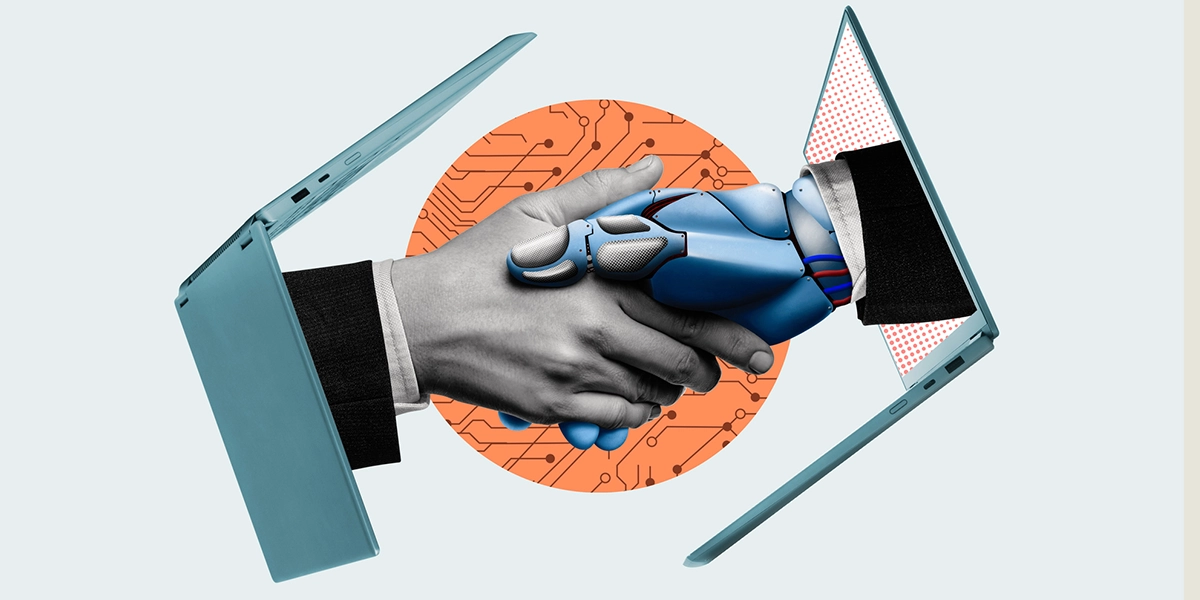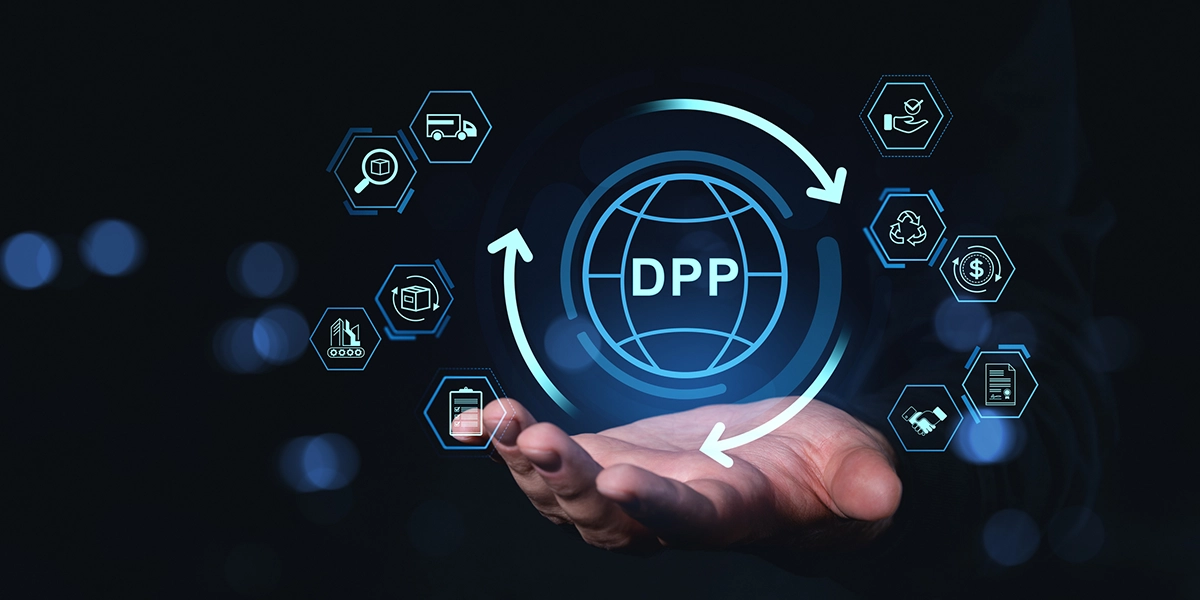V2X (or Vehicle-to-Everything) technology has moved into the spotlight after providing emergency support during recent blackouts in Tasmania.
Tasmania, famous for its stunning landscapes and renewable energy initiatives, faced a series of storms which damaged 20% of the state’s power and left tens of thousands of residents without heat, light, refrigeration and even water for up to two weeks. Residents with medical conditions were hit particularly hard, and the crisis has raised important questions about reliability of Tasmania’s infrastructure.
As many residents and businesses struggled to keep the lights on, they discovered the viability of V2X—the use of electric vehicles to provide contingency power to the home, the grid, buildings or individual devices.
What is V2X Technology?
By now virtually everyone is familiar with standard EV charging. This process employs uni-directional power flow to deliver power from a charge point to a vehicle for storing and use from the vehicle’s electric battery.
Thanks to an innovation known as “smart charging technology”, Vehicle-to-Everything or V2X charging incorporates bi-directional power flow, which converts a vehicle’s stored direct current (DC) energy into alternating current (AC) for output and use by another device.
"In V2H, the electric vehicle serves as an emergency generator. This V2X usage came to the fore during the Tasmanian power outage."
The Mechanics of V2X and V2H Technology
One of the most innovative uses for EVs is their ability to power households. This concept, known as vehicle-to-home (V2H) technology, is transforming how we think about energy consumption and storage, providing an exciting solution to energy management.
At its core, V2H technology allows electric vehicles to discharge energy stored in their batteries back into a home’s electrical system. This process is facilitated by specialized hardware, including a bidirectional charger that can convert the DC electricity from the vehicle’s battery into AC electricity for home use. This technology not only empowers households during power outages but also offers significant benefits during regular consumption.
Major Types of V2X Charging
Smart bi-directional charging feeds energy from a vehicle to a number of different destinations, and each destination constitutes its own category of V2X. The major categories are:
V2V (Vehicle-to-Vehicle) Charging
Stored electric power is delivered directly to another vehicle.
V2L (Vehicle-to-Load) Charging
V2L charging enables the use of power tools, vehicle accessories and other devices directly from a vehicle’s EV battery.
V2G (Vehicle-to-Grid) Charging
Here, vehicle owners send unneeded battery reserves back into their area power grid. Owners typically receive energy company credits for V2G charging.
V2B (Vehicle-to-Building) Charging
Electric vehicles provide charge to a BEMS (Building Energy Management System) during high use or emergencies.
V2F (Vehicle-to-Farm) Charging
Less its own category, farms may sometimes employ a combination of V2L and V2H power delivery to support tools, agricultural equipment and residential living.
V2H (Vehicle-to-Home) Charging
In V2H, the electric vehicle serves as an emergency generator. This V2X usage came to the fore during the Tasmanian power outage.

V2X and the Tasmanian Blackouts
While the most recent blackouts were a result of extreme weather, Tasmania and other places have faced similar outages in the past. These blackouts can be attributed to several factors:
- Reliance on Hydro Power: Tasmania’s energy system is predominantly hydroelectric. While this is a renewable resource, prolonged dry spells can lead to lower water levels in reservoirs, reducing energy production.
- Infrastructure Challenges: Aging infrastructure and maintenance issues can exacerbate the problem, making the grid less resilient to fluctuations in demand.
- Extreme Weather Events: Tasmania’s unique climate can lead to sudden storms and high winds, damaging power lines and disrupting supply.
The Rise of Electric Vehicles
As Tasmania seeks to transition to a more sustainable energy future, more residents are gravitating toward electric vehicles. EVs are seen as a key part of reducing carbon emissions and meeting environmental goals—and the utility of V2X emergency power only makes them more appealing. This surge in EV adoption presents both opportunities and challenges for the state’s energy grid.
Opportunities
- Reduced Emissions: EVs produce zero emissions at the tailpipe, which aligns with Tasmania’s commitment to environmental sustainability.
- Energy Storage Potential: EVs can serve as mobile energy storage units. In times of peak demand—and during blackouts—EV batteries could potentially feed energy back into the grid, helping to stabilize supply.
- Incentives for Renewable Energy: As more EVs are adopted, there’s a push for additional renewable energy sources. This can encourage investments in solar, wind, and other renewables, complementing Tasmania’s hydro capacity.
"We must address charging infrastructure to ensure a consistent and reliable power supply."
the Benefits of Using V2X / V2H to Power Residential Homes
- Energy Independence: With the ability to draw energy from an EV, households can gain a measure of independence from the grid. In regions prone to blackouts or unreliable power supply, V2H systems can provide a reliable backup source. During an outage, homeowners can seamlessly switch to their EV’s battery, ensuring that essential appliances remain powered, from refrigerators to medical devices.
- Cost Savings: Using an EV to power a home can lead to substantial cost savings. Homeowners can charge their vehicles during off-peak hours, when electricity rates are lower, storing energy that can be used later during peak demand times. This not only reduces utility bills but also takes advantage of time-of-use pricing offered by many energy providers.
- Optimized Renewable Energy Use: For households equipped with solar panels, V2H technology can enhance the utilization of renewable energy. During the day, when solar generation is high, excess energy can be stored in the EV’s battery instead of going back to the grid. Homeowners can then use this stored energy at night or during cloudy days, maximizing their renewable energy investment and reducing reliance on fossil fuels.
- Grid Stability and Support: As the integration of renewable energy sources increases, managing supply and demand becomes crucial. EVs can play a vital role in this dynamic. By discharging stored energy back into the grid during peak demand periods, EVs can help stabilize the grid, contributing to overall energy resilience. This capability can lead to innovative grid services, such as demand response programs, where EV owners can be compensated for providing energy back to the grid.
V2X Challenges and Considerations
While the potential of using EVs to power households is significant, there are challenges to consider. First, the initial cost of purchasing an EV and the necessary bidirectional charger can be high. However, as technology advances and more affordable options become available, these barriers are likely to diminish.
Additionally, the impact of discharging vehicle batteries on the lifespan of EVs must be carefully managed. Manufacturers are increasingly designing batteries with longevity in mind, ensuring that regular discharging doesn’t lead to significant wear and tear.
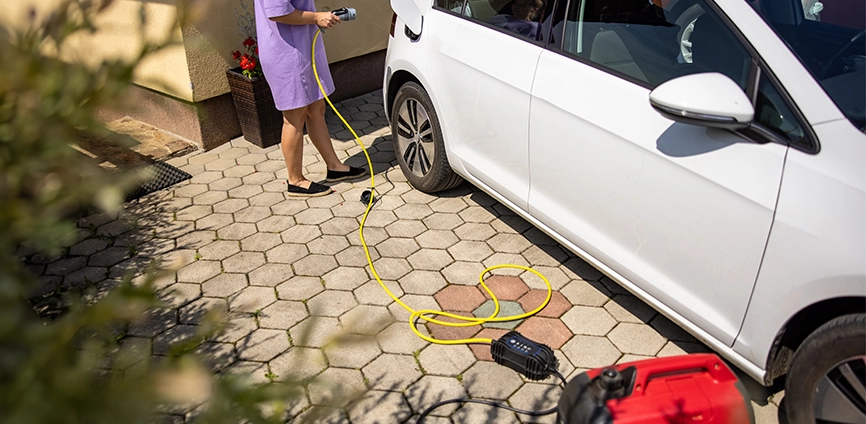
The Future of V2H and V2X Technology
As more homeowners adopt electric vehicles, the integration of V2H technology is likely to expand. Continued advancements in battery technology and the development of smart home systems will further enhance the capabilities of EVs in energy management.
The use of electric vehicles to power households represents a revolutionary step towards sustainable energy consumption. By leveraging V2H technology, homeowners can achieve energy independence, reduce costs, optimize renewable energy use and contribute to grid stability. As the world embraces the electric vehicle revolution, harnessing their power for household use will play a pivotal role in shaping a sustainable energy future.
The Path Forward
To address the challenges posed by blackouts while promoting electric vehicle adoption and V2H usage, Tasmania needs to take a multifaceted approach:
- Invest i
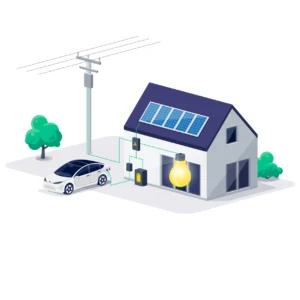 n Infrastructure: Upgrading aging power lines and substations will be essential. Improved infrastructure can enhance the grid’s resilience against blackouts and accommodate increased EV demand.
n Infrastructure: Upgrading aging power lines and substations will be essential. Improved infrastructure can enhance the grid’s resilience against blackouts and accommodate increased EV demand. - Diversify Energy Sources: Expanding beyond hydroelectric power by investing in solar and wind energy will create a more robust and reliable energy portfolio. This diversification can help mitigate the impact of droughts or other disruptions to hydro supply.
- Smart Charging Solutions: Implementing smart charging systems can help manage demand. For instance, charging EVs during off-peak hours can alleviate stress on the grid, reducing the likelihood of blackouts.
- Public Awareness and Incentives: Educating the public about the benefits of EVs and available incentives can drive adoption. Government policies that support charging infrastructure development will also be crucial.
As the state continues to embrace renewable energy and electric vehicles, it must simultaneously address infrastructure challenges to ensure a reliable power supply. With careful planning and investment, Tasmania can pave the way for a sustainable energy future that utilizes V2H technology to support both its residents and the environment.
